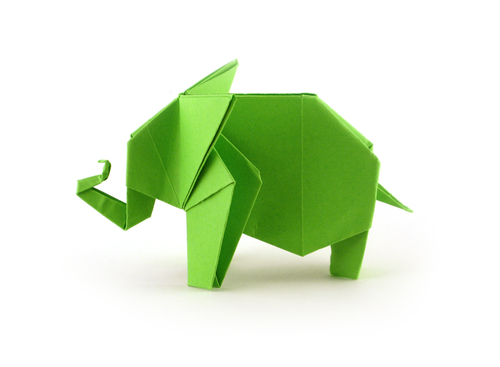Origami is a versatile and engaging tool and it is very easy to use origami in education for children aged 7-12. Its benefits extend beyond the realm of art and creativity, encompassing multiple subjects and skills.

Here, we explore how origami can be integrated into education and offer age-appropriate ideas for its use:
1. Enhancing Fine Motor Skills
Origami requires precise folding and manipulation of paper, making it an excellent activity to improve fine motor skills in younger children. As they fold, pinch, and crease paper, they enhance hand-eye coordination and dexterity.
Age-Appropriate Idea: For 7-8-year-olds, start with simple origami projects like paper airplanes, frogs, or boats. These projects involve basic folds and are perfect for developing fine motor skills.
2. Patience and Concentration
Origami encourages patience and concentration as children follow step-by-step instructions to create intricate designs. This helps improve their attention spans and ability to focus on tasks.
Age-Appropriate Idea: Teach 9-10-year-olds how to fold more complex origami models, such as animals or modular origami. These projects require sustained concentration and attention to detail.
3. Geometry and Math
Origami is an excellent way to introduce geometry and mathematical concepts in a hands-on, visual manner. It helps children understand geometric shapes, symmetry, angles, and spatial relationships.
Age-Appropriate Idea: Challenge 10-12-year-olds to create origami designs using specific geometric shapes like squares, triangles, or hexagons. This reinforces their understanding of geometry.
4. Problem Solving and Critical Thinking
Origami often involves deciphering and following intricate instructions. This helps children develop problem-solving skills, critical thinking, and the ability to break down complex tasks into smaller, manageable steps.
Age-Appropriate Idea: Introduce 7-8-year-olds to origami books or apps with clear, easy-to-follow instructions. Encourage them to troubleshoot and find solutions when they encounter difficulties.
5. Cultural Awareness
Origami has deep roots in Japanese culture. Exploring origami can be an opportunity to introduce children to different cultures, fostering an appreciation for diversity and global perspectives.
Age-Appropriate Idea: Share stories and history related to origami with 7-12-year-olds. Discuss its origins in Japan and its role in various cultures worldwide.
6. Artistic Expression
Origami is a form of artistic expression that allows children to create beautiful and unique pieces of art. It nurtures their creativity and imagination.
Age-Appropriate Idea: Encourage children to design their own origami creations. Let them experiment with colors, sizes, and variations of traditional designs.
7. Social and Teamwork Skills
Origami can be a collaborative activity that promotes teamwork and social interaction. Children can work together on projects, sharing ideas and helping each other.
Age-Appropriate Idea: Organize origami clubs or group activities where children collaborate on larger origami projects or work on creating a themed display together.
8. Language and Reading Skills
Origami instructions often come with written or visual explanations. Following these instructions can improve reading comprehension and vocabulary.
Age-Appropriate Idea: Use origami as a reading comprehension exercise for 10-12-year-olds. Provide them with origami instructions to follow, and then discuss the process and their understanding of the text.
9. History and Storytelling
Many origami models have interesting histories and stories behind them. Exploring these stories can be a fun way to teach history and storytelling.
Age-Appropriate Idea: Share the legend of Sadako Sasaki and the thousand cranes with children. Encourage them to fold senbazuru while learning about the story’s historical context.
10. Environmental Awareness
Origami can teach children about the value of resources and sustainability. It uses minimal materials (paper) and encourages recycling and reusing paper.
Age-Appropriate Idea: Discuss the environmental impact of paper production and waste with children. Encourage them to use recycled or scrap paper for origami projects.
Incorporating origami into education for 7-12-year-olds offers a wide range of benefits, from enhancing motor skills and concentration to fostering creativity, cultural awareness, and critical thinking. It can be integrated into various subjects and used to reinforce essential skills and knowledge while making learning enjoyable and engaging.
